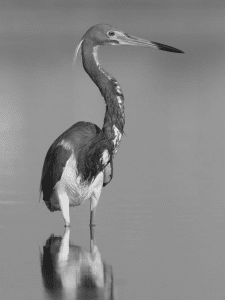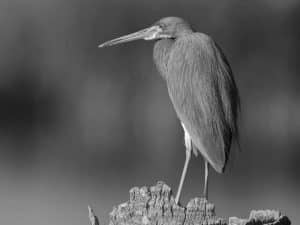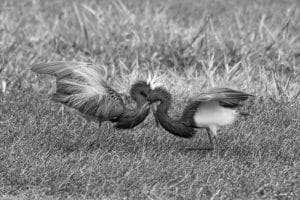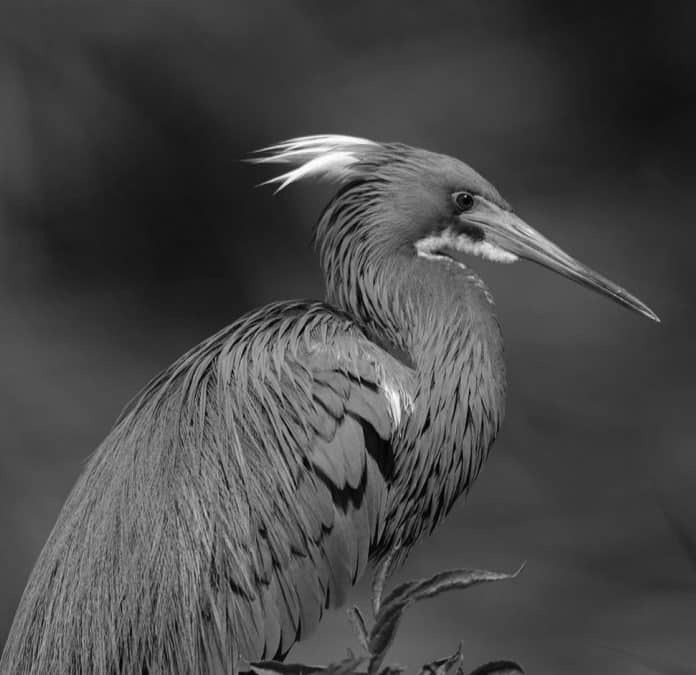Introduction to Herons in Tanzania
Tanzania is a country blessed with an incredible array of wildlife and natural beauty, and its avian inhabitants are no exception. One of the most captivating and elegant birds is the heron in Tanzania. These graceful creatures can be found in various habitats across the country, from wetlands and rivers to savannas and coastal areas. In this article, we will delve into the world of herons in Tanzania, exploring their diverse species, habitats, behavior, conservation efforts, and the role they play in the country’s ecosystems. Whether you are a bird enthusiast, a nature lover, or a photographer, Tanzania’s herons offer a fascinating subject to discover and appreciate.
The Diverse Heron Species in Tanzania

Tanzania is home to a rich diversity of heron species, each with its own unique characteristics and beauty. Among the most prominent species found in the country are the Goliath Heron, Black-headed Heron, Grey Heron, Squacco Heron, and the majestic Black Heron, to name just a few. These species vary in size, plumage, and behavior, making them a source of fascination for birdwatchers and researchers alike.
The Goliath Heron, with its towering stature and striking plumage, is a sight to behold. This largest heron species in Africa can be found in the wetlands and marshes of Tanzania, where it hunts for fish and amphibians with its impressive fishing skills. The Black-headed Heron, on the other hand, is a more common sight, often seen wading in shallow waters or perched on the banks of rivers and lakes. Its distinctive black and white plumage and long legs make it a recognizable and photogenic subject for bird enthusiasts.
The diversity of heron species in Tanzania offers a wealth of opportunities for birdwatchers and researchers to observe and study these magnificent birds in their natural habitats. Whether you are exploring the Serengeti plains, the shores of Lake Victoria, or the tranquil wetlands of Selous, you are likely to encounter a variety of heron species, each contributing to the rich tapestry of Tanzania’s avian life.
Habitat and Behavior of Tanzanian Herons
Tanzania’s diverse landscapes provide a range of habitats for herons to thrive, from the lush wetlands of the Rufiji River Basin to the coastal estuaries of the Indian Ocean. These adaptable birds can be found in freshwater lakes, rivers, swamps, and even in urban areas, where they have learned to coexist with human settlements.
The behavior of herons is equally fascinating, as they exhibit a blend of patience, grace, and precision in their hunting and nesting activities. Whether it’s the poised stance of a Grey Heron as it waits for its prey, or the sudden plunge of a Black Heron to create a canopy of shade to attract fish, each species has its own unique strategies for survival. The elaborate courtship displays and nest-building rituals of herons add another layer of intrigue to their behavior, making them a subject of interest for wildlife enthusiasts and researchers.
Understanding the habitat and behavior of Tanzanian herons is essential for their conservation and the preservation of their natural environments. By studying their foraging patterns, nesting habits, and migratory behaviors, conservationists and ecologists can develop strategies to safeguard the habitats that are crucial for the survival of these elegant birds.
Conservation Efforts for Herons in Tanzania
The conservation of herons and their habitats in Tanzania is a critical endeavor, given the various threats they face, including habitat loss, pollution, and human disturbances. Fortunately, there are concerted efforts by local and international organizations to protect these birds and the ecosystems they rely on.
One of the key initiatives in heron conservation is the establishment of protected areas and wetlands that serve as important breeding and foraging grounds for these birds. National parks such as Serengeti, Selous, and Manyara, as well as Ramsar sites like Lake Natron and Lake Victoria, play a vital role in safeguarding the habitats of herons and other waterbirds.
Furthermore, community-based conservation projects and environmental education programs are empowering local communities to become stewards of their natural resources, including the wetlands and rivers that are vital for heron conservation. By involving communities in sustainable resource management and ecotourism activities, these initiatives are not only benefiting the herons but also improving the livelihoods of the people who share their habitats.
Efforts to combat poaching, illegal fishing, and the trade of wetland resources are also integral to heron conservation in Tanzania. By enforcing laws and regulations that protect wildlife and their habitats, authorities are working to ensure that herons and other avian species can thrive in a safe and sustainable environment.
Birdwatching Hotspots for Herons in Tanzania

For birdwatchers and nature enthusiasts, Tanzania offers a plethora of hotspots where herons can be observed in their natural splendor. From the vast wetlands of the Selous Game Reserve to the picturesque shores of Lake Manyara, there are numerous opportunities to encounter these graceful birds in their diverse habitats.
The Rufiji River Basin, with its intricate network of channels, lagoons, and floodplains, is a prime location for observing a variety of heron species, including the regal Goliath Heron and the diminutive Squacco Heron. The riverine forests and wetlands of the Kilombero Valley also provide excellent birdwatching opportunities, where herons can be spotted amidst the lush vegetation and waterways.
In the northern circuit of Tanzania, birdwatchers can visit the tranquil shores of Lake Victoria, which harbors a rich avian diversity, including several species of herons. The shallow marshes and reed beds of the lake create an ideal habitat for these birds, offering a chance to witness their hunting and nesting behaviors up close.
The allure of birdwatching in Tanzania extends beyond the national parks and reserves, as even urban areas like Dar es Salaam and Arusha are home to urban wetlands that attract herons and other waterbirds. With the guidance of experienced local guides and naturalists, visitors can embark on birdwatching excursions that reveal the hidden gems of Tanzania’s avian treasures.
Photographing Herons in Tanzania
For wildlife photographers, Tanzania provides a captivating canvas to capture the beauty and elegance of herons in their natural surroundings. Whether you are an amateur enthusiast or a seasoned professional, the country’s diverse landscapes and abundant birdlife offer endless opportunities for stunning photography.
The soft morning light illuminating the wetlands of the Serengeti, the reflections of herons in the calm waters of Lake Manyara, and the dramatic coastal scenes along the Indian Ocean are just a few of the settings that lend themselves to captivating heron photography. The intricate details of their plumage, the grace of their movements, and the intensity of their hunting behaviors present a wealth of visual storytelling possibilities for photographers.
To capture compelling images of herons in Tanzania, it is essential to exercise patience, stealth, and sensitivity to the birds’ natural behaviors. Whether you are using a telephoto lens to capture intimate portraits or employing wide-angle perspectives to showcase the birds in their expansive habitats, understanding the behavior and movements of herons is key to creating impactful photographs.
In addition to the technical aspects of photography, it is crucial for photographers to prioritize the welfare of the birds and their habitats. Respecting their space, minimizing disturbances, and adhering to ethical guidelines for wildlife photography are essential practices to ensure that the beauty of herons in Tanzania can be celebrated and preserved for future generations.
Ecotourism and Heron Conservation in Tanzania
The intersection of ecotourism and heron conservation in Tanzania presents a symbiotic relationship that benefits both the natural environment and local communities. By promoting sustainable tourism practices and responsible wildlife viewing, ecotourism initiatives contribute to the protection of herons and their habitats, while also providing economic opportunities for the people who live alongside these natural wonders.
Ecotourism lodges and camps situated in or near heron habitats offer visitors the chance to immerse themselves in the beauty of Tanzania’s natural landscapes while contributing to conservation efforts. Guided birdwatching excursions, nature walks, and boat safaris provide immersive experiences that showcase the diversity of heron species and the ecosystems they inhabit.
Moreover, ecotourism ventures that incorporate community-based initiatives ensure that the benefits of tourism extend to local residents, fostering a sense of stewardship and pride in the conservation of herons and their habitats. By supporting local businesses, employing community guides, and engaging in cultural exchanges, visitors can actively participate in the preservation of Tanzania’s natural heritage.
The revenue generated from ecotourism activities can also be channeled into conservation projects, habitat restoration efforts, and environmental education programs that further enhance the protection of herons and other wildlife. By fostering a harmonious balance between tourism and conservation, Tanzania’s ecotourism industry is playing a pivotal role in safeguarding the country’s natural treasures for future generations.
The Role of Herons in Tanzanian Ecosystems

The presence of herons in Tanzanian ecosystems extends beyond their aesthetic allure, as these birds play a vital role in maintaining the ecological balance of their habitats. As adept hunters and foragers, herons contribute to the regulation of fish populations, control of aquatic invertebrates, and the preservation of wetland ecosystems.
The foraging activities of herons help to control the abundance of small fish and aquatic organisms, thereby influencing the dynamics of food webs and nutrient cycling in wetland environments. By regulating prey populations, herons contribute to the overall health and productivity of aquatic ecosystems, which in turn sustains the diverse array of wildlife that depend on these habitats.
Furthermore, the nesting behaviors of herons create nesting sites and rookeries that benefit other bird species, contributing to the biodiversity and resilience of Tanzania’s avian communities. The presence of heron colonies in wetlands and waterways not only serves as indicators of habitat quality but also provides opportunities for researchers to monitor the health of these ecosystems.
Understanding the ecological significance of herons in Tanzanian ecosystems underscores the importance of their conservation and the preservation of the habitats they rely on. By recognizing the interconnectedness of herons with the broader web of life, conservation efforts can be directed towards safeguarding the integrity and functionality of the ecosystems that sustain these magnificent birds.
Cultural Significance of Herons in Tanzania
In addition to their ecological importance, herons hold cultural significance in Tanzanian folklore, traditions, and artistic expressions. Across various ethnic groups and communities, herons are often revered for their grace, beauty, and symbolic representations in local mythology and customs.
In some Tanzanian cultures, herons are associated with attributes such as patience, wisdom, and adaptability, and are often depicted in proverbs, stories, and traditional dances. The graceful movements of herons have inspired artistic motifs in tribal crafts, textiles, and visual arts, reflecting the enduring influence of these birds in the cultural tapestry of Tanzania.
Furthermore, the presence of herons in local ecosystems has contributed to the livelihoods and sustenance of communities through the sustainable use of wetland resources and the traditional knowledge of bird behavior. Herons have historically been intertwined with the daily lives and spiritual beliefs of Tanzanian people, exemplifying the deep-rooted connections between humans and the natural world.
Recognizing the cultural significance of herons in Tanzania underscores the need to integrate traditional knowledge and indigenous perspectives into conservation efforts. By engaging with local communities and indigenous groups, conservation initiatives can draw upon the wisdom and experiences of those who have coexisted with herons for generations, fostering a holistic approach to heron conservation that respects both the natural and cultural heritage of the country.
Conclusion
The beauty of herons in Tanzania is a testament to the rich biodiversity and natural wonders that the country has to offer. From the serene wetlands to the vibrant coastal ecosystems, herons grace the landscapes with their elegance and contribute to the ecological richness of Tanzania’s natural heritage.
By understanding the diverse species, habitats, behaviors, and cultural significance of herons, we can appreciate the integral role these birds play in the country’s ecosystems and cultural tapestry. Through conservation efforts, ecotourism initiatives, and community engagement, Tanzania is working towards safeguarding the habitats and wellbeing of herons, ensuring that these magnificent birds continue to enchant and inspire generations to come.
As you explore the beauty of herons in Tanzania, whether through birdwatching, photography, or cultural experiences, remember that your appreciation and support contribute to the preservation of these avian treasures. By celebrating the diversity and significance of herons, you become a part of the collective efforts to conserve Tanzania’s natural heritage and ensure a sustainable future for its magnificent wildlife.


































